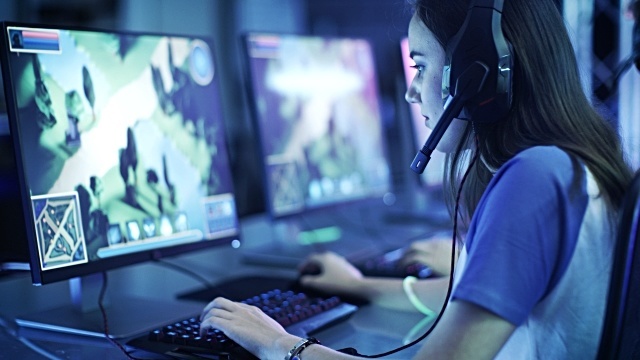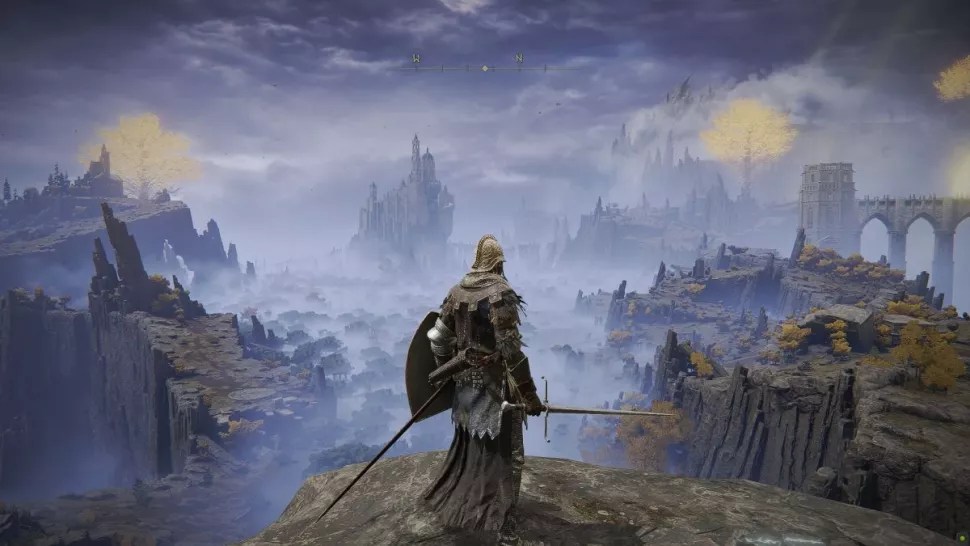10 video games to help kids think big

- Educational video games endure a gimcrack reputation for being boring.
- We list 10 games that can help players learn and may improve their cognitive skills.
- The American Psychological Association recognizes other benefits to playing video games, including social and motivational ones.
Video games have shouldered a bad rap. Critics argue they indoctrinate children to violence, reinforce negative stereotypes, and produce cognitively lazy shut-ins. Ironically, educational video games enjoy an even shabbier reputation. Say what you will about DOOM and Grand Theft Auto, at least they aren’t boring.
But such reputations are hardly earned. While the relationship between violent media and aggression is complicated by an accumulation of risk factors, the American Psychological Association has found insufficient evidence to link video games with delinquency and criminal violence. The association also acknowledges the many cognitive, motivational, emotional, and social benefits of digital play.
As for educational games, they’ve come a long way since the days of Castle of Dr. Brainand Wally Bear and the No! Gang. For starters they can be fun—and not in an “it’s this or flashcards” kind of way. In fact, some of the best learning video games weren’t even developed with education in mind.
Minecraft
The Minecraftphenomenon needs no introduction. Kids will gladly spend hours playing and exploring their blocky, lo-res sandboxes. In that interactive space, a lot of learning can happen.
Mojang’s Minecraft promotes agency, investigation, creativity, collaboration, and lateral-thinking skills in its survival mode, while its creative mode offers the tools for outstanding design opportunities. Some industrious players have built entire cities and fantasy worlds.
Educational organizations have utilized Minecraft‘s popularity and tool set to create entirely new learning opportunities. Code.org, for example, has created computer code tutorials which feature Minecraft characters and settings. And Microsoft Studios has developed an edition of the game specifically for educational purposes.
Kerbal Space Program
Squad’s Kerbal Space Program tasks players with overseeing their own space administration, building rocket ships, and launching them into space. Gameplay makes children feel like rocket scientists as it touches on many facets of actual space exploration—including design, mathematics, engineering, and aerospace physics.
Like Minecraft, the game also encourages experimentation and a growth mindset. Rocket launches will fail, forcing players to watch them explode spectacularly in the atmosphere. But the Kerbal’s enthusiasm and cartoonish whimsey makes failure more than half the fun and success all the sweeter.
If you are interested in seeing the game in action, check out this video of Timothy Szwarc, mechatronics engineer on the Mars 2020 rover project, trying to land his Kerbal-built rover on Mars.
The Super Mario series
When you play a 3D video game, do you feel like a rat in a maze? There’s good reason for that; you kind of are. Scientists have long known that environmental enrichment has positive effects on cognition and neural plasticity of rodents, and there are few environments more enriching and rewarding than a Super Mario level.
In a study published in the Journal of Neuroscience, researchers wanted to test if stimulating virtual environments provided a human correlate for rodent mazes. They had participants play Nintendo’s Super Mario 3D World for two weeks alongside two control groups—one played no video games, the another played the 2D game Angry Birds.
The results? Participants who played the 3D game showed improved performance on recognition memory tasks and mnemonic discrimination, suggesting these 3D environments influenced the hippocampus, a brain structure that plays a major role in learning and memory.
Another study, this one published in PLoS One, looked directly at gray matter in adults 55 to 75 years old. The participants were divided into three groups: one group played Super Mario 64, another took self-directed piano lessons, and the third performed no task. After six months, only the gamer group showed a significant increase in the gray matter of the hippocampus (though the music group showed an increase in the dorsolateral prefrontal cortex, and both the musicians and the gamers saw growth in the cerebellum.)
While these studies don’t prove Super Mario will make you smarter, that’s okay. The games still offer a bounty of problem-solving, spatial navigation, and eye-hand coordination learning tools. Any increase of gray matter is a bonus.
Rabbids Coding
Ubisoft’s Rabbids Coding is more straightforward in its educational goals. The game teaches players the basics of coding by requiring them to create simple algorithms. These algorithms then guide the titular Rabbids through mazes of obstacles to an end goal. No prior coding experience is required, and younger children can still enjoy the logic puzzles without comprehending concepts like program, algorithm, or outputs.
The story of guiding the Rabbids off the International Space Station before they destroy everything has a fun, maniacal Looney Tunes vibe. But be warned! The Rabbids act like Minions cross-pollinated with Jerry Lewis’s facial expressions. Kids love them; parent mileage will vary.
Rabbids Coding is available for free on Ubisoft’s UPlay platform.
Epistory
Keyboarding is more important than ever. Most jobs require basic keyboarding skills, and as proficiency tests migrate to computers, young adults will need these skills to succeed in their education. Unfortunately, many schools aren’t teaching typing under the false belief that children are either already proficient or will learn naturally through computer interaction.
Parents and schools need a fun, engaging way to introduce keyboarding proficiency. Enter Fishing Cactus’ Epistory.
Epistory takes players on an adventure alongside a young girl and her fox companion as they explore this fantasy land. Through typing, players battle monsters and solve increasingly difficult puzzles that slowly migrate their fingers beyond home row. It’s all wrapped up in a gorgeous origami art style with a story that “literally unfolds” as players progress.
The Portal series
The Portal series takes place in the Aperture Science Lab under the watchful eye of GLaDOS. This sarcastic, genocidally-oriented A.I. pushes players through a series of puzzles that require the mind-bending portal gun to overcome.
It’s basically an escape room that’s been built inside a Rubix Cube that players solve with the powers of a spacetime-leaping subatomic particle. The scenarios stretch logic, problem-solving, spatial-awareness, and lateral-thinking to the absolute limit. It’s also darn funny, sporting a humor that’s equal parts wry and absurd.
A study published in Computers & Education found that Portal 2 players showed more improvement in standard cognitive skill tests than players of Lumosity, an online program that markets itself as a “brain workout.”
“If entertainment games actually do a better job than games designed for neuroplasticity, what that suggests is that we are clearly missing something important about neuroplasticity,” C. Shawn Green, a psychologist at the University of Wisconsin-Madison, told Popular Science. (Green was not involved in the Computers & Education study.)
The Civilization series
Lead your civilization. That’s the challenge of this popular strategy series. Starting with a group of prehistoric humans, players must utilize economics, diplomacy, innovation, and military might to secure their civilization’s place in history.
While many strategy games focus exclusively on combat, Civilization offers four routes to victory: cultural, religious, martial, and scientific. The game teaches planning, resource management, and basic economics.
The history can get a bit wonky—at least, we don’t recall a time when Mahatma Gandhi forced Cleopatra to surrender by threat of nuclear destruction. But the leaders feature gameplay traits that hint at their historic influence, which may prime a self-directed study of history.
Nintendo Labo
Nintendo Labo combines design thinking with learning video games to create an unconventional education experience. Using cardboard kits, players build and personalize peripheral devices as varied as a piano, fishing rod, bug bot, driving wheel, and even a child-sized robot suit. Each peripheral then pairs with a game on the Nintendo Switch.
The concept nurtures an interest in engineering, construction, and creativity. Some of the games also sport programming interactions, allowing the players to see how the physical build affects the digital space and visa versa.
With Labo, players get to understand how their toys function, not simply see what they do. Bill Nye seems to get a kick out of it, too.
The Professor Layton series
The first thing you’ll noticed about the Professor Layton series is its gorgeous art style. It’s what you would get if Studio Ghibli adapted an Hercule Poirot novel. The aesthetics perfectly match the story, which follows the titular detective as he ekes out clues to solve the day’s mystery.
Players must keep track of locations and characters in a point-and-click style adventure. The clues are presented as mind-bending puzzles that test the player’s logic, mathematics, spatial orientation, and lateral thinking. These can be mind-busting for even older players, but a generous hint system means most ages are welcome.
This War of Mine / Never Alone
Unlike most war games, which serve as adolescent power fantasies, 11 bit studios’ This War of Mine tasks players with overseeing the survival of a group of civilians caught between the military and the separatists.
They’ll need to gather resources, manage the shelter, and tend to the community’s physical and mental wellbeing. The experience forces tough choices on the player, like stealing much needed food from other survivors, while providing no easy solutions.
This War of Mine provides a different type of learning video game. Like a good piece of art or literature, it asks its players to empathize with a part of the human experience that is alien to their everyday life.
For younger players, we’d recommend subbing out This War of Mine with Never Alone. A platform by Upper One Games, the game is based on a traditional tale of the Iñupiat people, a native Alaskan tribe.
By solving the game’s puzzles, players are rewarded with “cultural insights,” stories of the Iñupiaq people shared by their storytellers. Developed in partnership with the Cook Inlet Tribe Council, the game offers players an entertaining and personal method to engage with a rich culture.
Gaming: Truths & Myths
There are 10 excellent learning video games that entertain and teach in equal proportion. But our list is hardly comprehensive. Mario Maker, Little Big Planet, the Carmen Sandiego series, and The Legend of Zelda series are all equally deserving of a spot.
Of course, just because video games are excellent learning tools doesn’t mean children (or adults) should spend hours a day playing them. They offer an engaging complement to other learning tools, like books, parks, museums, and the like. But with these and other games, parents don’t have to worry about letting their children enjoy a play session now and again.





